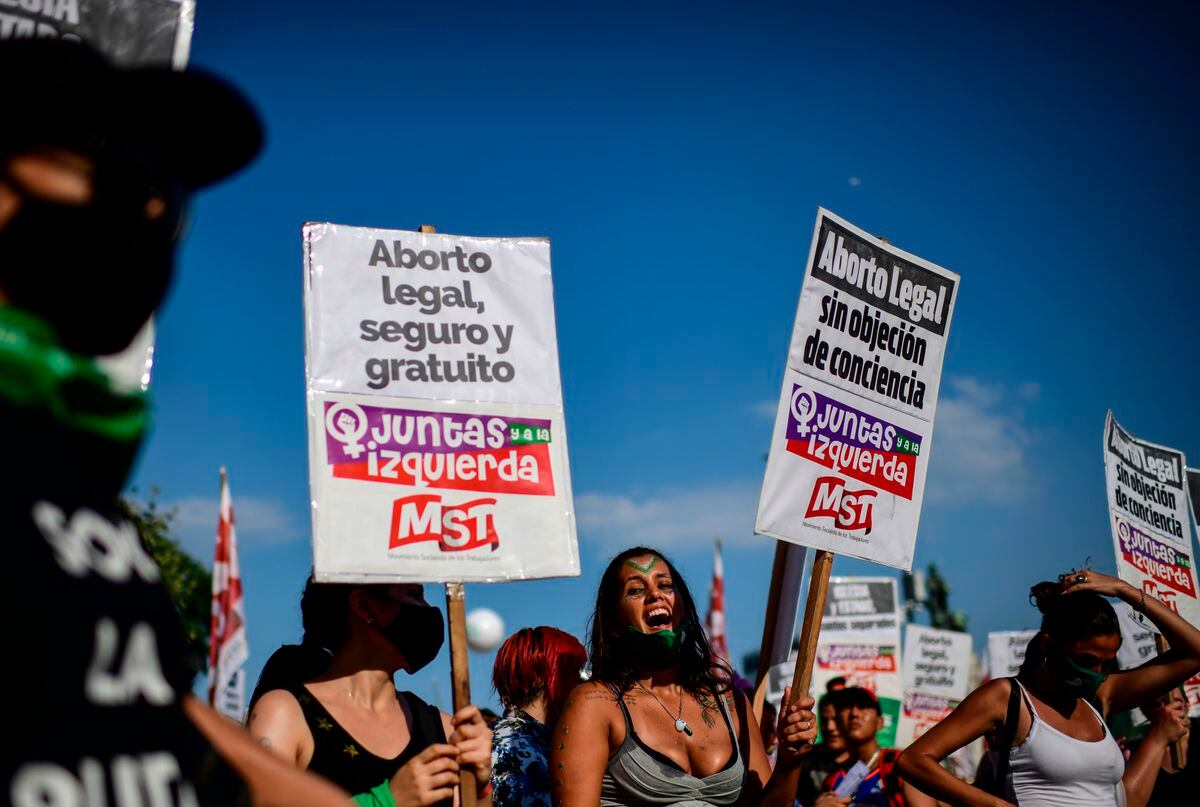For the last four years, the left has won most of the competitive presidential elections in the region with the presence of ideologically opposed parties.
To explain this cycle of victories, it is usual to turn first to reasons on the political supply side: generational renewal, new ideological approaches, polarization of competition with the right.
But equally or more important is that the supply finds a matching demand.
And, in light of those results, that's how it has been in recent years.
There are at least three factors that have come together to encourage these majorities to go to the left, present in multiple parts of the continent, but with distinctive weights and forms in each country.
More information
The changing shape of the two Colombias
The first and most obvious is the rise of progressive positions among voters.
A relatively simple way to prove that this movement has indeed taken place is by choosing a particularly controversial issue and observing how public opinion has evolved.
The AmericasBarometer question on the right to abortion is perfect for this exercise.
Indeed, in practically all the countries in which the left has won in recent years (in addition to Ecuador, where it came close, and Brazil, where it will compete with good prospects in October this year), the number of people who would grant the right to terminating pregnancy when the woman's life is in danger has increased from 2012 to 2018. The growth is particularly pronounced in Chile (from 53% to 81%),
Honduras (33% to 59%) and Mexico (51% to 68%), but it occurs to a greater or lesser extent throughout Latin America.
The pro-reproductive rights mobilization that has had a transnational reach like few others inevitably goes hand in hand with these numbers, and specifies the general trends of opinion.
In fact, with these mobilizations we arrive at the second factor: the beginning and consolidation of a multi-cycle of protests that have served both as catalysts for specific demands (the case of abortion being the clearest but not the only one) as well as for a more intense discontent. diffuse and widespread.
A massive protest is like a mirror: just like a poll of voting intentions in which a candidate that nobody expected suddenly scores, society realizes that its demands and frustrations are shared.
In this sense, it could be the first step in a wave of coordination that leads to a new candidate or movement taking over the presidency of a country.
Sometimes, that same candidate comes from the mobilization.
Such was the case of the winner Gabriel Boric in Chile,
the loser but surprisingly strong in the first round of Ecuador Yaku Pérez, or the long-time activist Francia Márquez who reached the vice presidency of Colombia.
All of them are a number represented in the question of the same AmericasBarometer on participation in protests: they rose especially in Chile (the proportion of citizens that has made it jump from 5% to 12% in the last decade), Colombia (finding its maximum of 13.3% in 2016 and deflating later, in part due to the pandemic), Bolivia (with the maximum: 16.7%).
The inevitable link of these increases is in the dissatisfaction with the different democracies of each country.
Not with democracy as a system, but with the functioning of each one.
The same survey shows how it fell sharply in all the countries considered, especially in Colombia, Peru, Chile, and Mexico.
But in these last two cases there is a recovery just after the election of a new president, showing that the feeling of exclusion in decision-making was reduced once there was a change in power.
Now, it also happened with the right: in Brazil after Bolsonaro's victory in 2018, and in Ecuador in 2021. Probably, more than the specific ideology, the general trends of opinion are concrete.
The feeling of new direction and representation of the diversity of opinions that generates this effect.
This serves as a warning to the left: as has already been seen in other corners of the world, neither change nor representativeness are its heritage.
The voters, especially now that they feel more empowered, will keep the last word.

